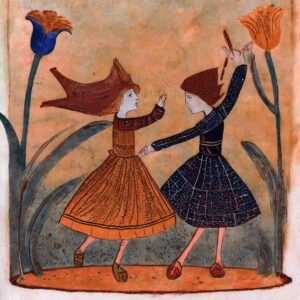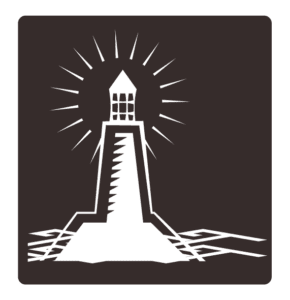
III - Game mechanics
Basic aspects of the Movement Roll and movement on land
 Each PC, NPC and animal advances rolling 1d6 and adding to it the VMv that might have (if the VMv is zero, as it happens with the PC's, only the dice result will be have into account). The resulting amount is equivalent to the Movement Points (PtMv) which that actor will be able to spend to travel in that turn, having into account that For each Eido he/she will pass through a certain amount of PtMv will have to be “payed”, which varies depending on the type of Eido (water, air, and type of Terrain in Terrestrial Eidos); of the species to which that character or animal belongs, and the type of movement (running, swimming or flying) that it performs. The cost in PtMv of crossing each type of Eido is indicated in the Character Sheets, in the case of the PCs, and in the Quick Reference Chart, for the NPCs and animals.
Each PC, NPC and animal advances rolling 1d6 and adding to it the VMv that might have (if the VMv is zero, as it happens with the PC's, only the dice result will be have into account). The resulting amount is equivalent to the Movement Points (PtMv) which that actor will be able to spend to travel in that turn, having into account that For each Eido he/she will pass through a certain amount of PtMv will have to be “payed”, which varies depending on the type of Eido (water, air, and type of Terrain in Terrestrial Eidos); of the species to which that character or animal belongs, and the type of movement (running, swimming or flying) that it performs. The cost in PtMv of crossing each type of Eido is indicated in the Character Sheets, in the case of the PCs, and in the Quick Reference Chart, for the NPCs and animals.
When a PC, NPC or animal does not have enough PtMv to finish passing an Eido, they will remain in that Eido until their next turn. The person carrying that PC, NPC or animal will write down in his/her Campaign Sheet the PtMv he/she needs to finish crossing that Eido, points that you must spend on his/her next Movement Roll to advance to the next Eido.
On the other hand, PCs, NPCs, and animals They are not forced to move, nor to consume all the PtMv What they get in a roll: They can stay at the initial Eido or stop at any other one they cross.. In any case, unused PtMv cannot be accumulated for the next turn.
Movement on the back of an animal or aboard a vehicle
PCs or NPCs riding on top of an animal or vehicle will advance at the speed of the animal or vehicle. That is to say: they will Movement Roll using 1d6 + VMv of the means of transport carrying them, and they will pay in each Eido that they cross the number of PtMv that it costs for them to pass through that Eido.
Movement with another animal or character
When a PC travels alongside another PC or animal (but not on top of it), both will use the PtMv value of the one with the lower Movement Value, and will travel the pace of the slower of the two on each Terrain Type.
Movement rules between Eidos
From an Eido, be it of sea, land or air, a player can only access to an adjacent Eido. Eidos that share some of their sides are considered adjacent., not those that touch each other in the corners.
Remember that At sea, borders with solid and dashed lines have the same value. Likewise, the thick dashed white line borders that mark the boundaries of Land Regions function the same as the rest of the borders for movement purposes.
Exceptions to this rule are movements following the paths, who ignore the borders between the Eidos and They only take into account the Pousas (circles on the Roads); and special moves, such as teleportation, that allow mariños and other PCs in possession of a magical Gift to travel instantly from one source to another, or from the mouth of a stream to its source.
Movement following the paths
Following paths allows a character or animal jump between the circular boxes marked on them (the so-called Pousas) using their cost to travel along the roads, ignoring the Eidos and the borders they cross. Most PCs, NPCs, and land animals only spend one point (or, if not, the minimum cost in PtMv) to cross each Pousa, so a roll of 1d6 + their Movement Value, gives the number of Pousas that can travel along that path, regardless of the type of terrain of the Eidos that these paths traverse.
Paths can only be accessed from an Eido where there is a Pousa of that path. When a Pousa is on a border between two Eidos, it can be accessed from either Eidos.
Access a path that has a Pousa in the Eido where there is already located a PC, NPC or animal, requires the “payment” of the Movement Points that it would cost to pass the first Pousa. Access a path that is in an Eido adjacent to the one where he/she is currently the PC, NPC or animal, requires the “payment” of the PtMv that it costs to cross the Eido where that Pousa is. In this case, no additional PtMv is spent on that first Pousa.
Some characters, such as the oestrimios do not move from Pousa to Pousa when they follow a path. It is understood that these beings have such a tiny size that they have to follow a path as well as go cross-country along the tiny paths that they can find in a meadow or scrubland Eido. They can only benefit from the paths in the Eidos in which they cross Rocky Cliffs or Rocks: in this case, if they follow the path they will pay 6 PtMv for each Eido they cross, but they will move from Eido to Eido, without attending the Pousas along the path.

